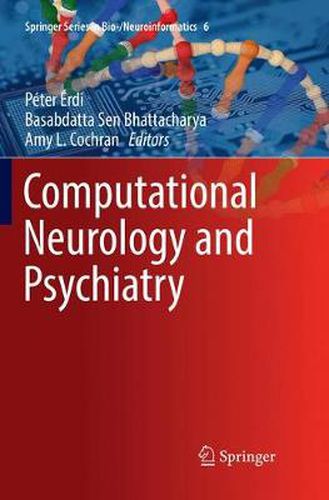Readings Newsletter
Become a Readings Member to make your shopping experience even easier.
Sign in or sign up for free!
You’re not far away from qualifying for FREE standard shipping within Australia
You’ve qualified for FREE standard shipping within Australia
The cart is loading…






This title is printed to order. This book may have been self-published. If so, we cannot guarantee the quality of the content. In the main most books will have gone through the editing process however some may not. We therefore suggest that you be aware of this before ordering this book. If in doubt check either the author or publisher’s details as we are unable to accept any returns unless they are faulty. Please contact us if you have any questions.
This book presents the latest research in computational methods for modeling and simulating brain disorders. In particular, it shows how mathematical models can be used to study the relationship between a given disorder and the specific brain structure associated with that disorder. It also describes the emerging field of computational psychiatry, including the study of pathological behavior due to impaired functional connectivity, pathophysiological activity, and/or aberrant decision-making. Further, it discusses the data analysis techniques that will be required to analyze the increasing amount of data being generated about the brain. Lastly, the book offers some tips on the application of computational models in the field of quantitative systems pharmacology. Mainly written for computational scientists eager to discover new application fields for their model, this book also benefits neurologists and psychiatrists wanting to learn about new methods.
$9.00 standard shipping within Australia
FREE standard shipping within Australia for orders over $100.00
Express & International shipping calculated at checkout
This title is printed to order. This book may have been self-published. If so, we cannot guarantee the quality of the content. In the main most books will have gone through the editing process however some may not. We therefore suggest that you be aware of this before ordering this book. If in doubt check either the author or publisher’s details as we are unable to accept any returns unless they are faulty. Please contact us if you have any questions.
This book presents the latest research in computational methods for modeling and simulating brain disorders. In particular, it shows how mathematical models can be used to study the relationship between a given disorder and the specific brain structure associated with that disorder. It also describes the emerging field of computational psychiatry, including the study of pathological behavior due to impaired functional connectivity, pathophysiological activity, and/or aberrant decision-making. Further, it discusses the data analysis techniques that will be required to analyze the increasing amount of data being generated about the brain. Lastly, the book offers some tips on the application of computational models in the field of quantitative systems pharmacology. Mainly written for computational scientists eager to discover new application fields for their model, this book also benefits neurologists and psychiatrists wanting to learn about new methods.